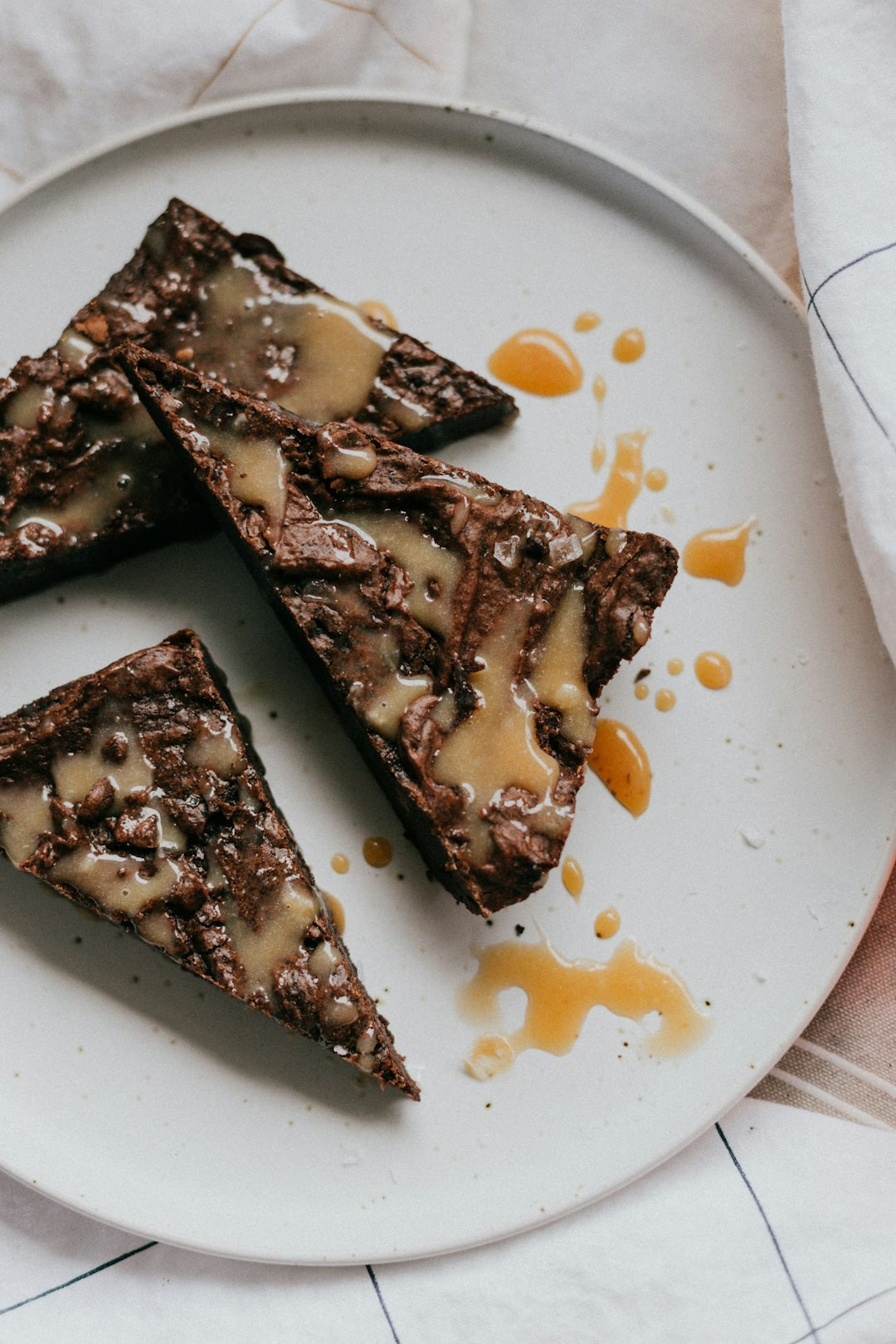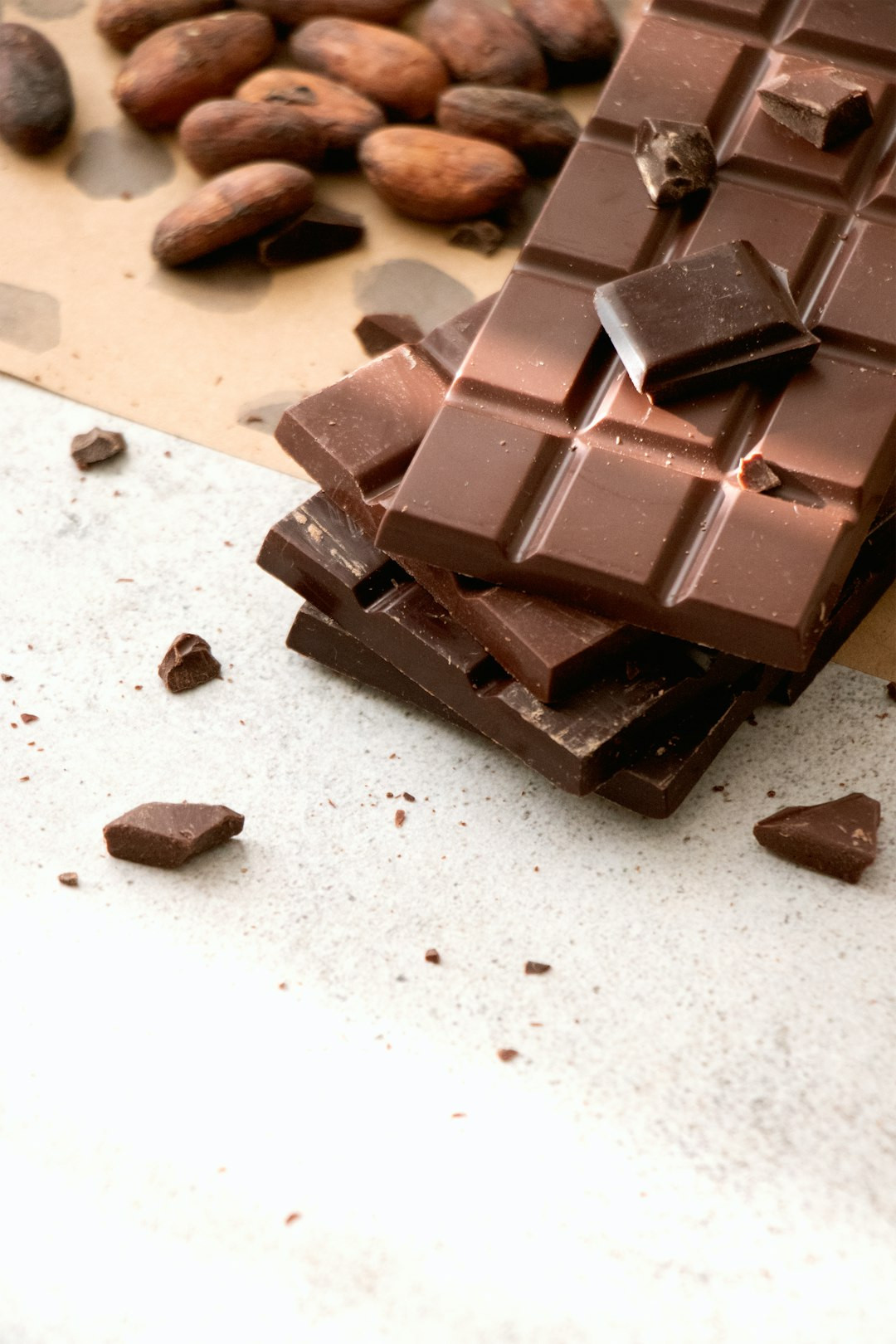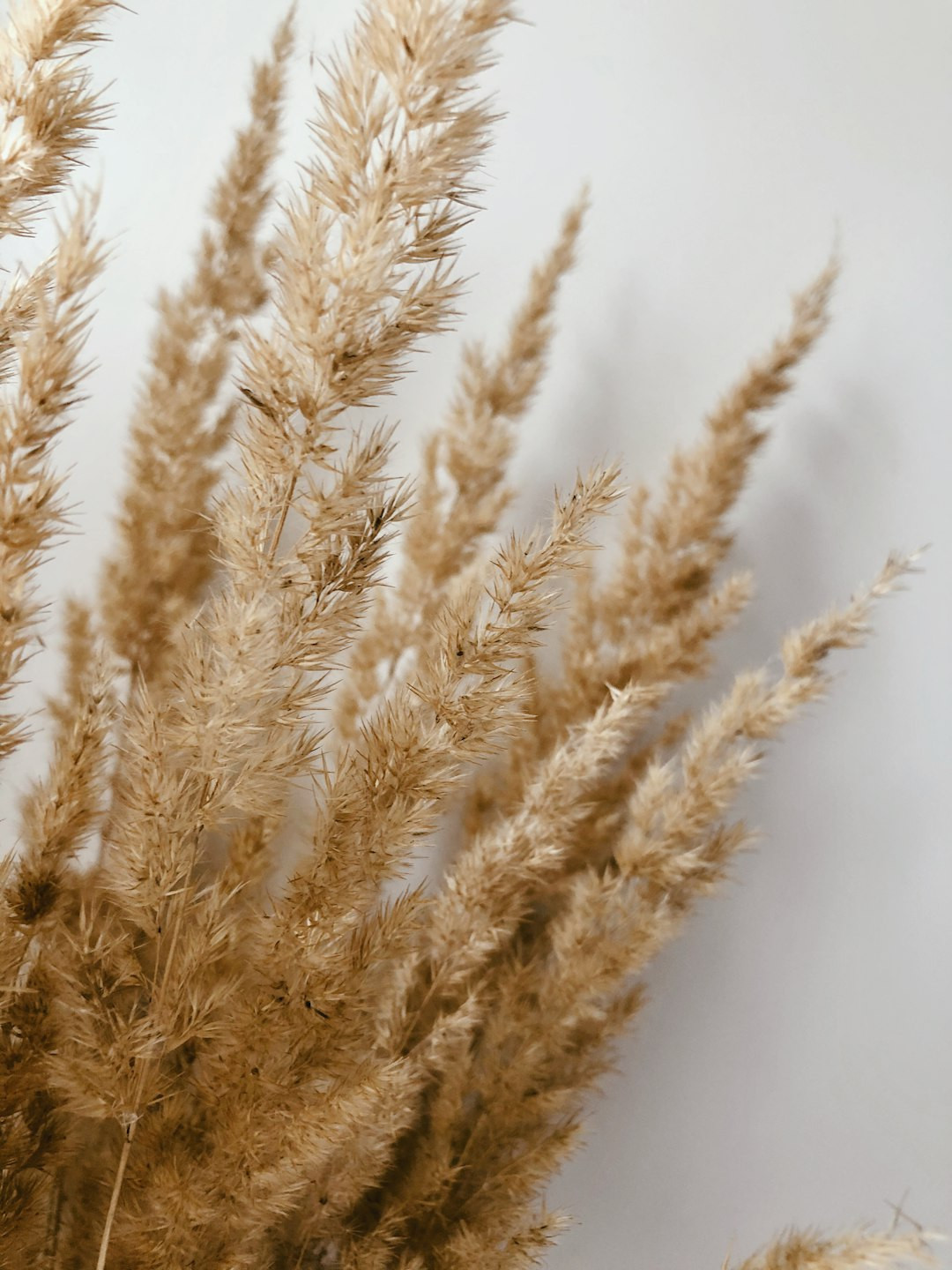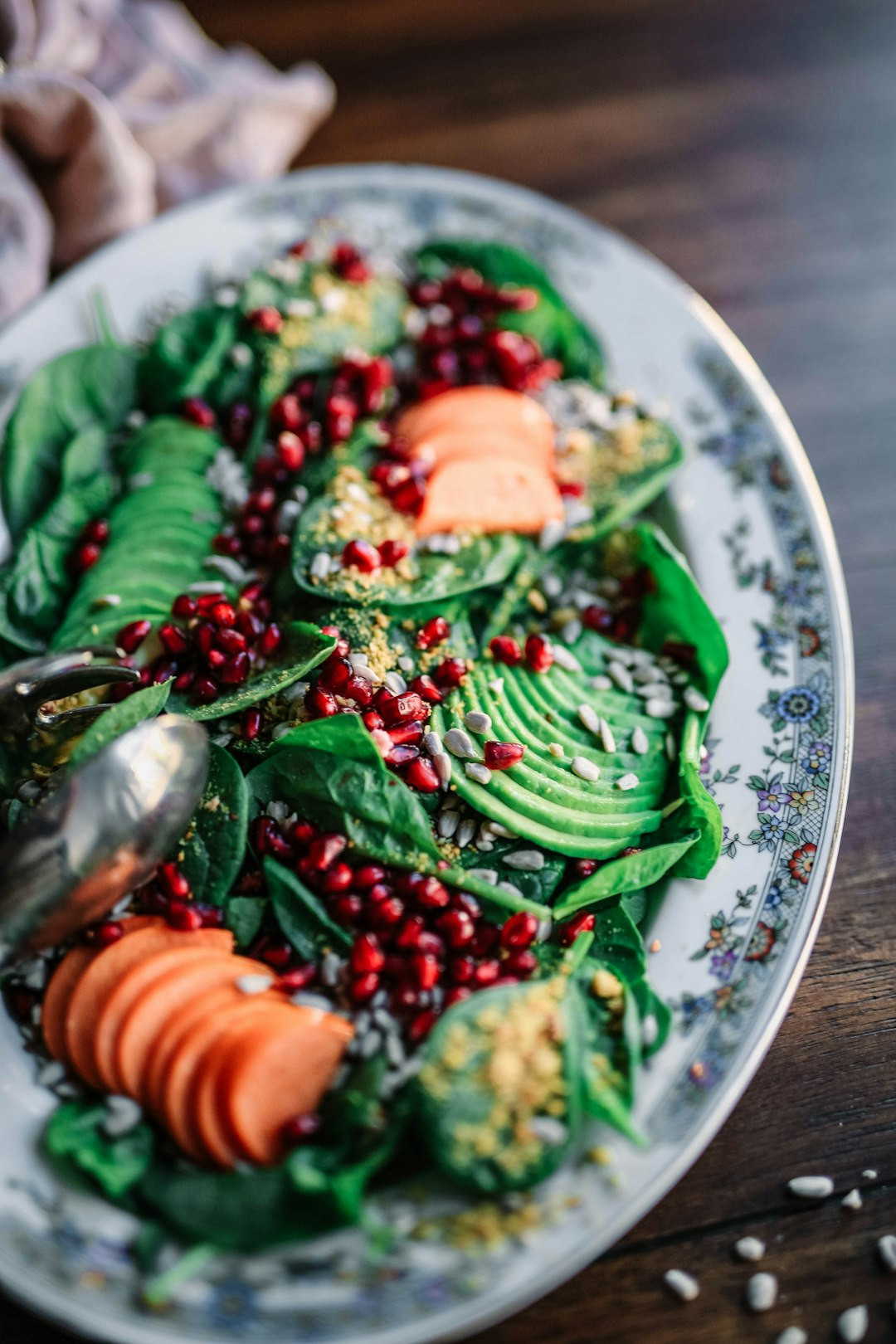Dive into the world of canine charm with our “Chocolate Labrador Guide: Unveiling the Sweet History & Best Snapshots” that promises a journey as indulgent as the richest cocoa. Uncover the luscious lineage of this beloved breed, and feast your eyes on a collection of captivating images that showcase the Chocolate Lab’s unrivaled splendor. Whether you’re a devoted Lab parent or simply a connoisseur of canine grace, this guide is your backstage pass to understanding the allure behind one of the world’s most sought-after furry companions. Join us on this sweet escapade that’s bound to fetch your heart and perhaps, a new four-legged friend.
Breed Overview

Chocolate Labradors are one of the most beloved dog breeds globally, known for their beautiful brown coats and sweet-natured disposition. They are a variation of the Labrador Retriever, a breed that originated in Newfoundland, Canada. Despite what their name suggests, Labs were more associated with the region’s neighbor, the Canadian province of Labrador. The breed was developed primarily by British nobles who imported these dogs in the 19th century and refined them for retrieving game in shooting sports.
Labs come in three standard colors – black, yellow, and chocolate – with the chocolate Labrador being the rarest of the three standard color variations. The history of the chocolate coloration in Labradors is a topic of considerable interest among enthusiasts. It is believed that the gene for the chocolate coat has always been a part of the Labrador gene pool, with reports of chocolate or “liver” colored pups occurring as early as the 1800s. However, chocolate Labradors were not always favored; the preference was traditionally given to black Labs for many years.
Over time, the breed gained popularity due to its highly amiable nature, intelligence, and versatility. Chocolate Labradors have become particularly sought after not just for their distinctive look but also for their characteristic temperament. Labs are known for their friendly and outgoing personality, eagerness to please, key traits for a family pet or a working dog.
Breed Overview:
- Size: Labradors are medium to large dogs, with males typically weighing 65-80 pounds and females 55-70 pounds.
- Coat: The breed features a short, dense, water-repellent double coat that helps them in cold water, a trait inherited from their fishing dog ancestors.
- Energy Level: They are active dogs that require plenty of exercises. Without it, they may become bored and potentially destructive.
- Intelligence: Considered among the most intelligent dog breeds, they are often used as guide dogs, in search-and-rescue, or in other service capacities.
- Lifespan: Labradors have a relatively healthy life with an average lifespan of 10-12 years.
- Temperament: Labradors are known for their friendly, gentle, and patient temperament, making them excellent family pets.
Taking snapshots of a chocolate Labrador at its best often captures the breed’s warmth and sociable character. The use of natural light can accentuate their shiny coats and the expressiveness of their gentle, often puppy-like eyes. The ideal pictures showcase their playful nature, whether they’re romping through fields, playing fetch, or simply enjoying the calm companionship of their human friends. These images not only steward their history but also celebrate the day-to-day joy of sharing life with a chocolate Labrador.
In terms of care, chocolate Labradors, like all Labradors, need regular exercise to manage their weight and keep their joints healthy. A balanced diet, preventive veterinary care, and mental stimulation are also key factors in ensuring that these dogs lead a happy, healthy life.
When considering welcoming a chocolate Labrador into your home, it’s essential to research and understand the breed’s needs. With the right home environment, chocolate Labs can be an enriching addition to the family, offering loyalty, affection, and countless moments of happiness.
Chocolate Labrador Characteristics

Chocolate Labrador Retrievers are a beloved variant of one of the most popular dog breeds in the world. The distinct chocolate-colored coat sets them apart from their yellow and black counterparts and is a result of a recessive gene that gives them this rich, luscious color. They share many characteristics with other Labradors, which contributes to their widespread popularity as family pets, working dogs, and loyal companions.
One of the primary chocolate Labrador characteristics is their dense, short coat that is designed to be both weather-resistant and insulating. This feature historically has made them excellent for work as retrievers in cold water, which was part of their original role in Newfoundland, Canada. Their coat also requires regular grooming to maintain its condition and to reduce shedding.
Another characteristic is their athletic build. Chocolate Labradors are strong and well-proportioned dogs, with a sturdy frame that supports their active nature and desire to play, work, and engage in physical activity. They are known for their high energy levels, which makes them excellent companions for outdoor adventures and an active lifestyle.
When it comes to temperament, Chocolate Labradors are known for their kind, friendly, and outgoing nature. They are typically very social dogs that enjoy the company of humans and other animals alike. This makes them great family pets as they are usually good with children and can integrate well with other household pets.
Their intelligence and trainability are also key components of their characteristics. Chocolate Labradors are quick learners and eager to please, which makes them highly trainable. They excel in various canine sports and activities such as agility, obedience, and of course, retrieving. They are also commonly used as service dogs, therapy dogs, and search and rescue dogs because of their keen intelligence and adaptable nature.
In terms of snapshots that capture the essence of Chocolate Labradors, images often showcase their expressive, friendly eyes that seem to reflect an inherent joy and warmth. Snapshot-worthy moments come from their interactions with people — their loving demeanor when they’re with their family, their focus and determination during training or work, and their playful antics when at rest or in play.
Photographs of Chocolate Labradors in nature, swimming, or retrieving can highlight their physical abilities and working dog heritage. Their chocolate coats contrasted against various backdrops, whether it’s the vibrancy of fall leaves, the crispness of winter snow, or the lush green of summer, can produce stunning visuals that celebrate their beauty and physicality.
Overall, Chocolate Labradors are more than just their gorgeous coats. They consist of a multifaceted personality that is affectionate, playful, and hardworking, with a history rooted in companionship and service. Their snapshots capture not only their physical attributes but also their spirit, making them the cherished breed that many have come to know and love.
The Earliest Records of the Chocolate Labrador in History

Chocolate Labradors, known for their rich coat color and affectionate personalities, have become one of the most beloved dog breeds worldwide. Their history, intertwined with that of the Labrador Retriever, has its own unique elements worth exploring.
The earliest records of Chocolate Labradors date back to the late 19th and early 20th centuries. These records indicate that chocolate-colored pups were born occasionally, but this color was not initially favored. Black Labradors were preferred for their working abilities, and chocolates were sometimes even culled from litters due to a misconception that their color signified a less capable working dog.
Labrador Retrievers hail from Newfoundland, Canada, where they worked alongside fishermen to retrieve fish and nets. These dogs were originally known as “St. John’s dogs” and were valued for their hardworking nature, intelligence, and loyalty. British nobles visiting Canada brought some of these dogs back to England in the early 1800s, which is where the breed was refined and standardized.
The gene responsible for the chocolate color is recessive, which means that both parents must carry it to produce chocolate offspring. It wasn’t until the 20th century that this color began to gain popularity, thanks in part to breed enthusiasts who recognized the beauty and charm of chocolates. By selectively breeding carriers of the recessive gene, the presence of this coat color increased.
When presenting the best snapshots of Chocolate Labradors, there are a few key elements to consider:
-
Regal Stance: They often exhibit a noble and proud posture, which can be captured in photographs that highlight their muscular build and balanced proportions.
-
Expressive Eyes: Their eyes tend to mirror a warm, friendly disposition, and photos that focus on their gaze can communicate their amiable nature.
-
Lustrous Coat: The texture and richness of their chocolate coat provide a stunning visual, especially when contrasted against natural backdrops with ample outdoor lighting.
-
Vivacious Personality: Candid shots of Chocolate Labradors playing, running, or engaging with their human companions can illustrate their active and playful temperament.
-
Tender Moments: Showcasing their gentle and affectionate side, pictures of them cuddling with family members or sitting patiently with children convey the sweet-natured character of the breed.
To summarize, the Chocolate Labrador has a fascinating history that belies their once underappreciated status. Their progression from overlooked to cherished is reflected in how breeders and dog enthusiasts now eagerly seek out this color variety. The key to capturing the essence of Chocolate Labradors in photographs lies in illustrating their physical beauty, amiable personalities, and their deep connection with humans.
How Chocolate Labradors Gained Popularity

Chocolate Labradors, with their shiny coats and expressive eyes, are among the most beloved dog breeds today. Their history can be traced back to Newfoundland in the 1700s, where St. John’s dogs, the ancestors of Labradors, were working alongside fishermen. These dogs were skilled at retrieving fishing nets from the icy waters, which ultimately became the hallmark of the Labrador breed’s retrieving abilities.
The early Labradors were primarily black, as this color was preferred for working dogs – the dark coat made them easier to spot in the water. However, in the late 1800s and early 1900s, chocolate and yellow puppies occasionally appeared in litters, although they were often considered less desirable.
Chocolate Labradors slowly gained popularity in the 20th century, especially from the 1930s onwards. The richness and uniqueness of the chocolate coat became more appreciated over time. Breeders started to select for the trait, resulting in more consistent breeding of chocolate Labradors.
By the end of the 20th century, the American Kennel Club (AKC) had witnessed a surge in registrations of chocolate Labradors. This rise in popularity could be attributed to their beautiful coat color, but also their reputation for having friendly and trainable temperaments.
The sweet nature of the Chocolate Labrador has made it a favorite for families, and their versatility and intelligence have kept them in high demand for a variety of roles including service dogs, therapy dogs, and working retrievers.
Today, Chocolate Labradors are found in countless family photographs and are often showcased in media and advertising, further cementing their status as beloved pets. The continued refinement of the breed’s health and temperament by responsible breeders ensures that the Chocolate Labrador’s popularity is likely to remain strong for years to come.
Formal Recognition of the Chocolate Labrador

The chocolate Labrador, known for its glossy brown coat and affectionate nature, is one of three classic colors of the Labrador Retriever—a breed widely renowned for its friendly temperament and trainable intelligence. The Labrador Retriever’s history dates back to the early 1800s in Newfoundland, where they were originally bred to help fishermen haul nets and catch escapees. However, it wasn’t until much later that the chocolate variant achieved formal recognition within the breed.
The initial breeding of what would become the Labrador Retriever focused primarily on function, with little consideration for specific color variations. The chocolate coloration in Labradors is believed to have always existed, but it was rare and not initially desirable compared to the predominant black Labs. It wasn’t until the 20th century that chocolate Labs began to gain popularity and acceptance.
The formal recognition of the chocolate Labrador began to take shape in the 1930s when the color was standardized within the breed. However, it was not until the 1960s and later that chocolate Labradors gained significant popularity among dog enthusiasts and within the general public. This was partly due to a growing appreciation for the breed’s natural abilities and the aesthetic appeal of the rich brown color.
Today, the chocolate Labrador is celebrated just like its black and yellow counterparts. The American Kennel Club (AKC) fully recognizes all three color variations of Labrador Retrievers without preference, and they are all judged by the same breed standards, except for the coat color.
In terms of photography and capturing the essence of the chocolate Labrador, the best snapshots often emphasize the dog’s expressive eyes and the lustrous sheen of their coat. These dogs can be incredibly photogenic, and their playful and joyful demeanor offers endless opportunities for captivating photos. Candid shots of chocolate Labs at play, showcasing their energetic and loving nature, or serene portraits that highlight their loyalty and gentleness, make for particularly powerful images.
A chocolate Labrador’s distinctive coloring can also be an incredible asset in various settings, from natural landscapes where their coat contrasts with the greenery to more urban backgrounds where their rich tones stand out against concrete and metal.
In summary, the chocolate Labrador has a sweet history that matches their affectionate personality. The journey from their late acceptance to formal recognition illustrates a story of evolving beauty standards and appreciation within the dog breeding world. The chocolate Labrador continues to win hearts, both in person and through beautiful photographs that illustrate the unique allure of this beloved breed.
Top 3 Unique Facts About Chocolate Labradors

Chocolate Labradors, known for their sweet disposition and velvety, rich coat, hail from a lineage steeped in history and function. As one of three standard colors in the Labrador Retriever breed, alongside yellow and black, the chocolate hue has its unique charm and fascinating background.
Top 3 Unique Facts About Chocolate Labradors
-
Genetics Behind the Color: The chocolate or liver color in Labradors is the result of recessive genes. Both parents must carry the gene to produce a litter with chocolate puppies, which once made them rarer than their yellow or black counterparts. However, over time, the color has gained popularity and has become more prevalent in the breed.
-
Historical Rarity and Modern Popularity: Originally, the chocolate color was not favored and even disqualified in show rings, leading to its scarcity in the early breeding programs. It wasn’t until the mid-20th century that chocolate Labradors gained recognition and popularity. Now, they are as beloved as the traditional black and yellow Labradors. This shifting trend serves as a testament to the evolution of breed standards and public preferences.
-
The Misconception of Temperament Differences: There is a common myth that the color of a Labrador’s coat correlates with its personality or behavior. However, there is no scientific evidence to support the claim that chocolate Labradors behave differently from their counterparts of other colors. While each dog is an individual with its personality, the color of a Lab’s coat is not a reliable indicator of its temperament. Responsible breeding, training, and socialization are the true determining factors of a dog’s demeanor.
Best Snapshots of Chocolate Labradors:
Photogenic and expressive, Chocolate Labradors are a favorite amongst photographers—both professional and amateur. Pictures that capture their glossy coats gleaming in the sunlight, or showcasing their deep, soulful eyes can highlight their striking good looks and endearing spirit. Whether playing fetch, nestled in nature, or nestled beside their family, Chocolate Labs are always a sight to behold, creating snapshots that are nothing short of heartwarming.
To capture the essence of a Chocolate Lab, it’s best to photograph them:
- In natural light to accentuate their luxurious fur color
- Engaging in activities they love, like swimming or retrieving, which can bring out their joyful nature
- Interacting with their human companions, which showcases their renowned loyalty and compassion
Every Chocolate Labrador is a blend of history, genetics, and, most importantly, boundless love and energy. Their photos not only depict their physical beauty but also their dynamic and loving personalities, making them cherished members of families around the world.
1. They’re genetically rare.

Chocolate Labradors are a beloved variety of the Labrador Retriever, a breed well-known for its friendly demeanor, intelligence, and versatility. These affectionate canines are popular family pets and skilled working dogs, excelling in roles like assistance, search and rescue, and as therapy animals.
They owe their beautiful brown coats to their genetics, more specifically to the expression of the recessive “b” allele in their genotypes. Labradors come in three primary colors – black, yellow, and chocolate. Each color is a product of the combination of two genes, one from each parent. The black color is dominant, meaning that it will express itself even if there’s only one gene for it (“B”), while both parents need to carry the recessive “b” gene for chocolate coloration in order for it to be expressed in their offspring.
Being recessive means that chocolate Labradors are rarer than their black or yellow counterparts. For two chocolate Labradors to produce a chocolate puppy, both parents must possess and pass on the chocolate gene. This rarity has often led to a special interest among breeders and pet enthusiasts alike, who are drawn to their unique color, alongside their charming and lovable traits.
In terms of capturing the best snapshots of chocolate Labradors, it’s essential to consider the lighting, especially because their dark coats can absorb more light. Daylight hours are generally the best for photography to bring out the rich, warm hues of the chocolate coat. Additionally, since Labrador Retrievers are active dogs, capturing them in motion – while playing fetch, swimming, or running – can result in dynamic, engaging images that showcase their playful nature and athleticism.
When photographing these dogs, consider using natural backdrops that complement their coat color, such as autumn leaves or green grass, which can contrast nicely with their chocolate color, highlighting their beauty. Patience is also key, as it may take some time to capture the perfect expression or action shot that fully encapsulates the joyful disposition and appealing looks of a chocolate Labrador.
2. Chocolate Labradors may be less healthy.

Chocolate Labradors have gained immense popularity due to their glossy brown coats and endearing personalities. However, it’s important to explore potential health concerns associated with this particular color variation within the Labrador Retriever breed.
As a genetic variant of the traditional black and yellow Labradors, chocolate Labradors carry a recessive gene that gives them their distinctive coloring. Research has suggested that this coloring may, unfortunately, come with some health trade-offs. Studies have indicated that chocolate Labradors might have a slightly shorter lifespan compared to their black and yellow counterparts, by about one to two years on average.
One study by the University of Sydney found that chocolate Labradors are more prone to ear infections and skin diseases. The research suggested these health issues are likely linked to their genetic make-up, which dictates their coat color. On top of that, chocolate Labradors are also reportedly at a higher risk of developing a condition known as canine pyotraumatic dermatitis, also known as “hot spots,” which results from excessive licking and scratching at one area of skin, leading to bacterial infection.
These findings have sparked conversations among breeders and enthusiasts about the importance of ethical breeding practices. Choosing breeding pairs based on health and temperament, rather than just coat color, is crucial in mitigating these health concerns. Prospective Labrador owners are also encouraged to work with reputable breeders who conduct comprehensive health screenings and genetic testing to ensure the overall well-being of their puppies.
For current or future chocolate Labrador owners, awareness of these health risks can lead to better preventative care strategies. Regular veterinary check-ups, a well-maintained diet, and a clean living environment can help in minimizing the risk of infections and skin diseases. Moreover, being vigilant for any signs of health issues and seeking timely veterinary intervention can ensure that chocolate Labradors lead a full and healthy life despite these potential health vulnerabilities.
In terms of celebrating these beloved canines, snapshots showcasing their unique beauty and charm can capture the hearts of many. Chocolate Labradors are often featured in photography and on social media accounts dedicated to the breed, highlighting their playful antics and loving nature. From their shining amber eyes to their rich, velvety coats, chocolate Labradors are undoubtedly a captivating sight for dog lovers worldwide.
While health concerns do exist, the allure of chocolate Labradors remains strong, with their sweet dispositions often outweighing any potential challenges. Their history as capable hunters, loyal companions, and excellent family pets continues to contribute to their enduring popularity. With informed care and responsible breeding practices, chocolate Labradors can continue to thrive and bring joy to those around them.
3. They may not be as trainable as other Labs.

Chocolate Labrador Retrievers are one of the most beloved dog breeds, known for their shiny brown coats, friendly eyes, and amiable demeanor. These dogs share the same origins as their black and yellow Labrador counterparts, tracing back to the early 1800s in Newfoundland, Canada. Originally bred to help fishermen haul nets and catch fish that escaped from fishing lines, Labradors have a rich history that is deeply intertwined with human companionship and work.
The sweet-natured Chocolate Labs did not make an appearance until later on. At first, black was the favored color, with chocolate or liver-colored puppies often culled from litters due to the preference for uniformity in color and the mistaken belief that colors could affect a dog’s performance. It wasn’t until the 20th century that chocolate Labs gained popularity as dog enthusiasts began to appreciate the beauty and unique qualities of this color variation.
Equally adept at being loyal family pets, service dogs, or hunting companions, Chocolate Labradors are a versatile and well-rounded breed. They are known for having slightly differing characteristics compared to their black and yellow siblings, which may include distinctions in their fur, temperament, and sometimes even their trainability.
When it comes to trainability, it is a common myth that Chocolate Labradors may not be as trainable as other Labs. It’s essential to recognize that the variance in trainability among Labrador Retrievers is more likely due to individual personality, lineage, and upbringing rather than coat color. Labs in general are quite intelligent and capable of learning a wide array of commands and tasks.
What actually affects the trainability of any dog, including Chocolate Labs, is the method and consistency of training. Positive reinforcement, patience, and early socialization play crucial roles in shaping a well-behaved and trainable Lab. Individual dogs may show differences in their eagerness to please and their attention span, but with a gentle and consistent approach, Chocolate Labs can be trained to the same standard as their black and yellow siblings.
As for photos and snapshots capturing the best moments with Chocolate Labradors, imagery often highlights their expressive eyes, affectionate nature, and playful demeanor. Pictures of these dogs can show them engaging in activities they love, such as swimming, playing fetch, or cuddled up with their families. Photographers might aim to capture their glossy coats in various lighting conditions, which can range from a deep mahogany to a warm, glowing brown in sunlight.
In short, Chocolate Labradors are a delightful breed with a distinct color that has won the hearts of dog lovers around the world. Despite myths about their trainability, with the right training approach, they can be as skilled and obedient as any other Lab. They boast a history that endears them to many, and photos of these charming companions often reflect the many reasons why they are cherished. Whether as enthusiastic adventure partners or cuddly family members, Chocolate Labs are a testament to the diversity and adaptability of the Labrador breed.
Does a Chocolate Labrador Make a Good Pet?

Chocolate Labradors are one of the most beloved dog breeds around the world, and it’s easy to see why. Renowned for their sweetness, both in appearance and demeanor, they make excellent pets for a variety of reasons.
The history of Chocolate Labradors traces back to the St. John’s water dog from Newfoundland, which was the ancestor to all modern Labrador Retrievers. Originally, Labradors were only recognized in two colors: black and yellow. The chocolate color variation became popular in the latter half of the 20th century, although the color has existed since the breed’s inception.
As for whether a Chocolate Labrador makes a good pet, they are well-known for their good-natured temperament. They tend to be friendly, outgoing, and high-spirited companions who get along well with children and other animals. Their intelligence and eagerness to please make them highly trainable, which is why they often excel in roles such as guide dogs for the blind, search and rescue dogs, and as part of therapy teams.
However, potential owners should be aware that Chocolate Labradors, like all Labs, require a good deal of exercise. They are an energetic breed that thrives on physical activity, and without it, they can become bored and potentially destructive. A Chocolate Labrador will do best in an environment where they can play and explore to keep their bodies and minds stimulated.
Their coat is also relatively easy to care for, requiring only regular brushing to keep it shiny and healthy. However, they do tend to shed, which is something to consider for those with allergies.
If you are considering a Chocolate Labrador as a pet, some of the best snapshots of their lives include them playing fetch, swimming – their webbed paws make them excellent swimmers – or just cuddling up with family. These moments underscore the breed’s adaptability and sociability.
In summary, Chocolate Labradors tend to make wonderful pets for families looking for a high-energy, affectionate companion who thrives on interaction and activity. Their friendly nature and ability to integrate into various roles make them a versatile choice for many different lifestyles. With proper care, training, and love, a Chocolate Labrador can be a delightful addition to any home.










